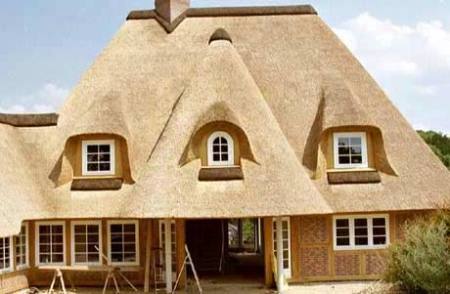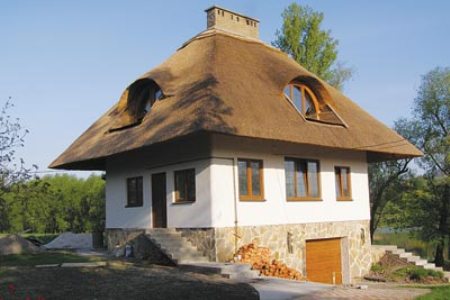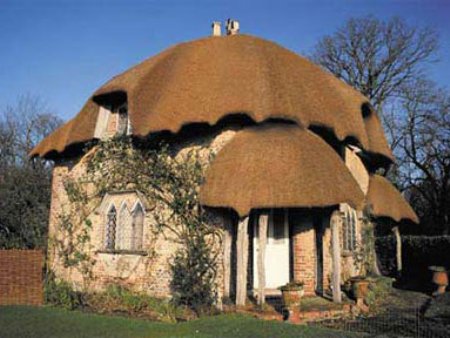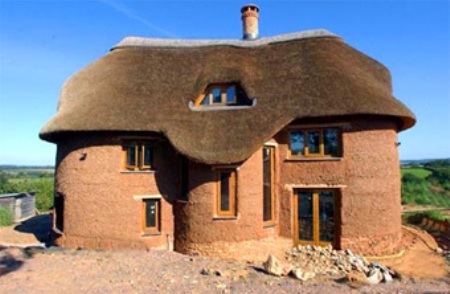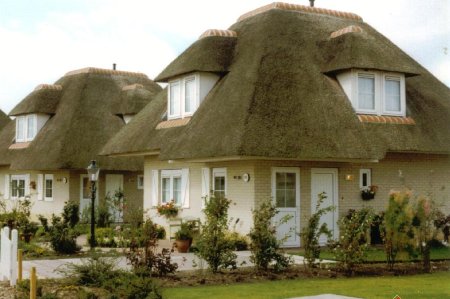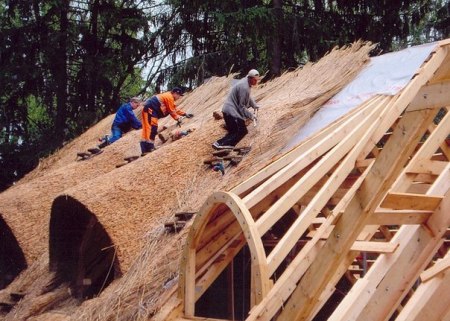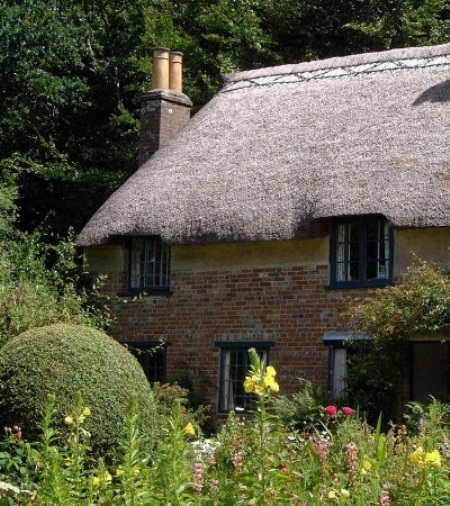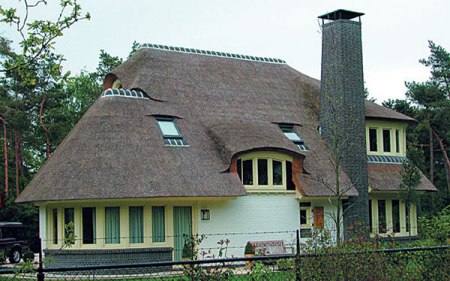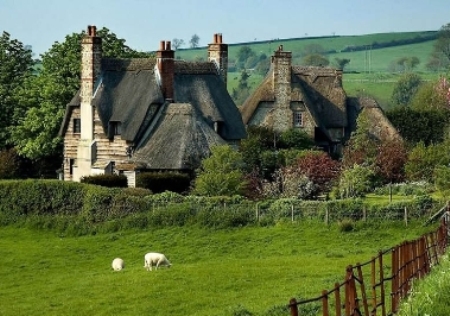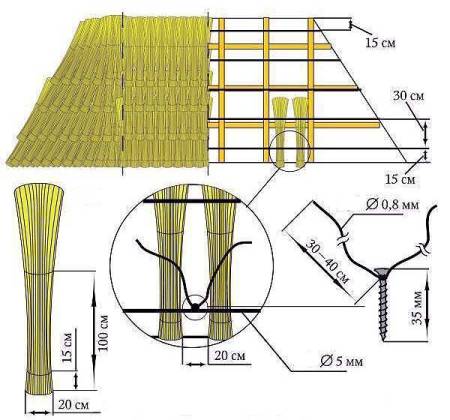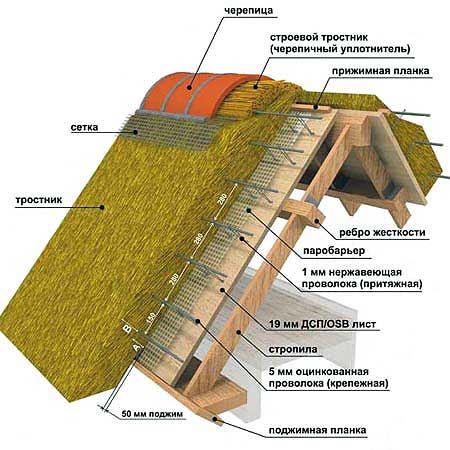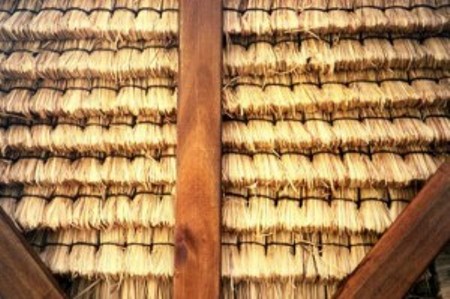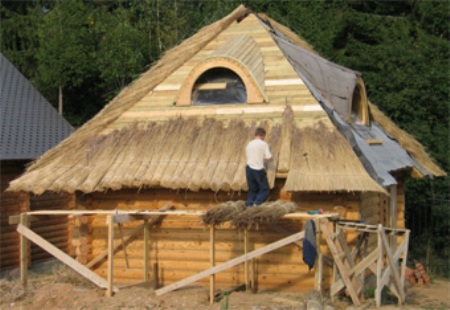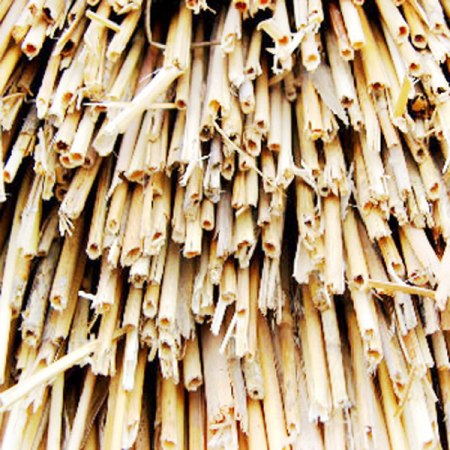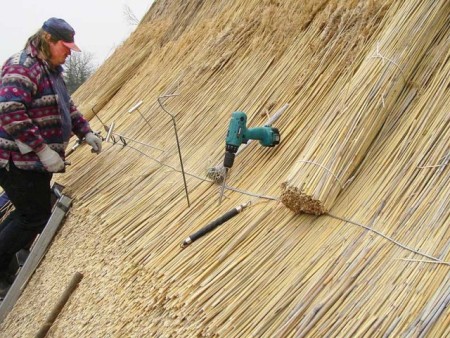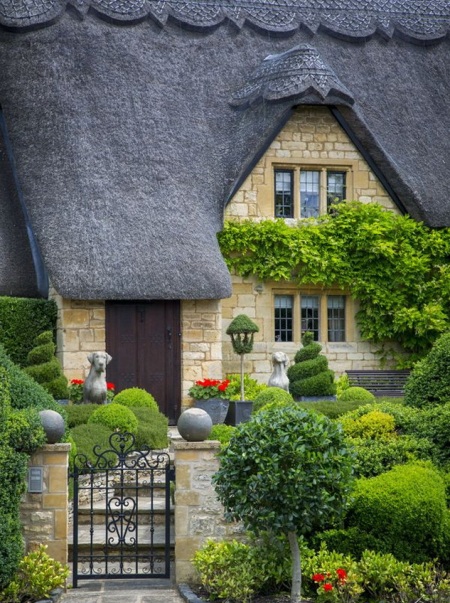Unusual and at the same time, a luxurious home of your own - a dream that has become obsessive for every second inhabitant of megacities. Statistics show that about half of the citizens have a desire to live in maximum unity with nature, while they want to build their own housing from environmentally friendly and clean building materials. In connection with this phenomenon began to return the fashion to the old versions of the roof overlap, made of natural materials. In the past, floors of this kind were on every house, but today they are considered exclusive and prestigious.
Content
Roof of reeds
The first experience of primitive builders has shown that the optimal variant of roofing building materials are various branches, stems and leaves of plants, they are quite suitable for protection of habitation from various weather cataclysms. Proceeding from this, it is not at all surprising that the reed roof remains rather fashionable, although it is considered to be one of the oldest.
Consider a reed roof or made of reeds, or rather from the reed eco panels house. Unusual characteristics and exceptional aesthetic qualities in recent years often attract attention to such materials, they are widely used in the west, especially in the US. Of course, the preparation of such building materials today is associated with modern technologies, and the process of their installation is somewhat modernized.
Nevertheless, even the roof made of reeds, in addition to the unique consumer qualities, will add a special natural color to the structure and will give an opportunity to feel proud for the work done. Now more detailed about the installation works, properties and qualities of the building materials used and directly about the technological process of the structure.
You can learn more about the construction of a reed roof when viewing a video:
Reeds in construction - one of the options for the construction of eco-friendly housing
Mankind has recently begun to realize how harmful ingredients for the health and the environment that are part of modern building materials can be. It is for this reason that very many make every effort to surround themselves and their relatives with materials that are natural and safe. In connection with the emergence of such desires and returned to fashion straw-reed overlap.
Reeds are naturally not the most commonly used kind of material to cover the roof. This material can be reliably attributed to the types of roofing of the elite class. Carrying out its functions of protection against natural disasters, the reed roof is also a way of self-expression of the owner of the house. In order to make a roof of a natural material you will need ordinary reed stems.
Reed cover roofs of simple shapes, the angle of inclination of which is not more than 45 degrees. Usually, together with reeds, additional materials are used: tiles, and sometimes wood. Wooden fragments and tiles are used to protect the part of the roof where the horse is.
Many people tend to think that reed material is easy enough, but in reality it is not. The square meter of such material has a weight of about 40 kg in case it is dry. If the material gets wet, then its weight is increased by about 10 kg for the same square meter. Naturally, under the reed roof will require the construction of a fairly solid foundation.
Roof of cane by one's own hands
First of all it is necessary to note the indisputable advantages of reeds:
- external appeal, originality and absolute sophistication,
- naturalness and ecological cleanness,
- excellent ability of this material to keep the temperature in the house constant,
- there is no need for a reed roof to build attic ventilation,
- compliance with the standard standards of thermal insulation, the only condition for compliance with this item - a cover of reeds on the roof should be at least 30 cm in thickness.
A roof made of reeds does not provide for the formation of a layer of thermal insulation and waterproofing, because it usually consists of two parts: the sheaves of reeds and the skin part.
Only in cases where the reed roof installation is performed in compliance with all norms and rules, the protection of the structure from external weather factors (strong wind, heavy precipitation, etc.) will be one hundred percent.
For the duration of the operational period, there are two opinions:
- experts argue that this overlap can be used without problems for several decades;
- people who are guided only by logical thinking assure that a roof of this kind will serve a much smaller amount of time, because such material as cane is fragile enough, and therefore not durable.
In any case, until the roof of the house is blocked by reeds and some amount of time passes, that is, while the owner personally does not convince himself of the plausibility of this or that option, it is too early to make final conclusions on this matter.
Dry reeds are easily flammable material. Increase its fire resistance with the help of a special fire-fighting compound. This composition is applied to the material before being laid on the roof.
Experts advise on the roof of this material, the pipe for the output of smoke, make it higher.
Only this option will help to eliminate the danger of fire - accidentally flying out of the pipe spark will go out faster than it will fly to the roof.
Varieties and technology of reed roof installation
The modern construction market is rich in offers of different kinds of reeds intended for decoration of the roof. Having decided to engage in the arrangement of the roof yourself, it is worthwhile to carefully study the technologies tested and tested by our ancestors many years ago.
The main ones are:
- english,
- dutch,
- american,
- danish.
Combines all types of reed stacking process at which material bundles are overlapped. Often, to create the most durable attachment, use a wire made of stainless steel. By this, when decorating each of the bundles, you need not forget to mount in the middle a yoke.
The main difference between the technologies is the length of the material used. In each of the above stated countries stems of different lengths are used.
The Dutch method is to use beams from 1 to 2 meters, while the thickness of used stems can vary from 0.2 cm to 6 cm.
The Danes cover the roofs with stems with a length of at least 1 meter, with a thickness of 0.4 cm.
The most attractive variant of the roofing is made by a homogeneous and maximally densely packed material. It is worth noting a significant increase in the practical value of the goods.
Also in the technologies of different countries there are differences between the padding of the material for the roof. The difference between the padding can either increase or decrease the percentage of material reliability, and also affects its looseness.
In principle, the ideas of different stacking technologies are similar to each other. The main difference between them is the thickness and length of the material used, as well as overlapping the roof ridge.
The overlapping options called open and closed are no less successful. The open method involves laying bundles of material on the lath in a way that will create the impression of a ceiling inside the room.
This method is mainly used in the design of expensive restaurants, as fragments of decor. This method assumes certain inconveniences: difficulties in installation, hit of reed fluff in the interior of the room and the like.
The closed method is uniquely more lighter and more convenient. Here bunches of reeds are placed on the wood laid in a continuous manner. Solid wood overlapping acts as a layer of waterproofing. Installation is much easier and in less time, compared with the previous method.
Mounting Features
The quality of the material used should be as high as possible, depending on the state of the reeds, the duration of the operational period depends on the state of the reed.
For works on overlapping it is necessary to use the stems of freshwater reeds with the separated leaves. Stems should not have visible lesions of mold, burnt stems or mixed with other species of aquatic plants will not do.
In order for the roof to be as reliable as possible, the bundles must be well fastened. On the angled beam, experts advise carrying out fastening with the use of a thin wire.
The main criterion for the correctness of the reed laid on the roof is considered equal. The color of the material used is not of fundamental importance. Reeds - natural material, so its different shades are completely acceptable. After a certain amount of time, the color of the entire overlap will be almost the same.
The final stage of the roofing of the reed roof is the work of pruning and giving the final form. This stage is carried out exclusively at the request of the customer: either pruning is performed to give a more accurate look, or, it is left as it is, in other words, this option is suitable for fans of creative chaos.
A roof made of reeds is a great way to give the house an unusual and individual look. But those who decided to be original in this way should remember that similar work is quite painstaking and requires certain skills and skills, so it is better to entrust it to experienced specialists who have sufficient experience in performing roofing works using such materials.



